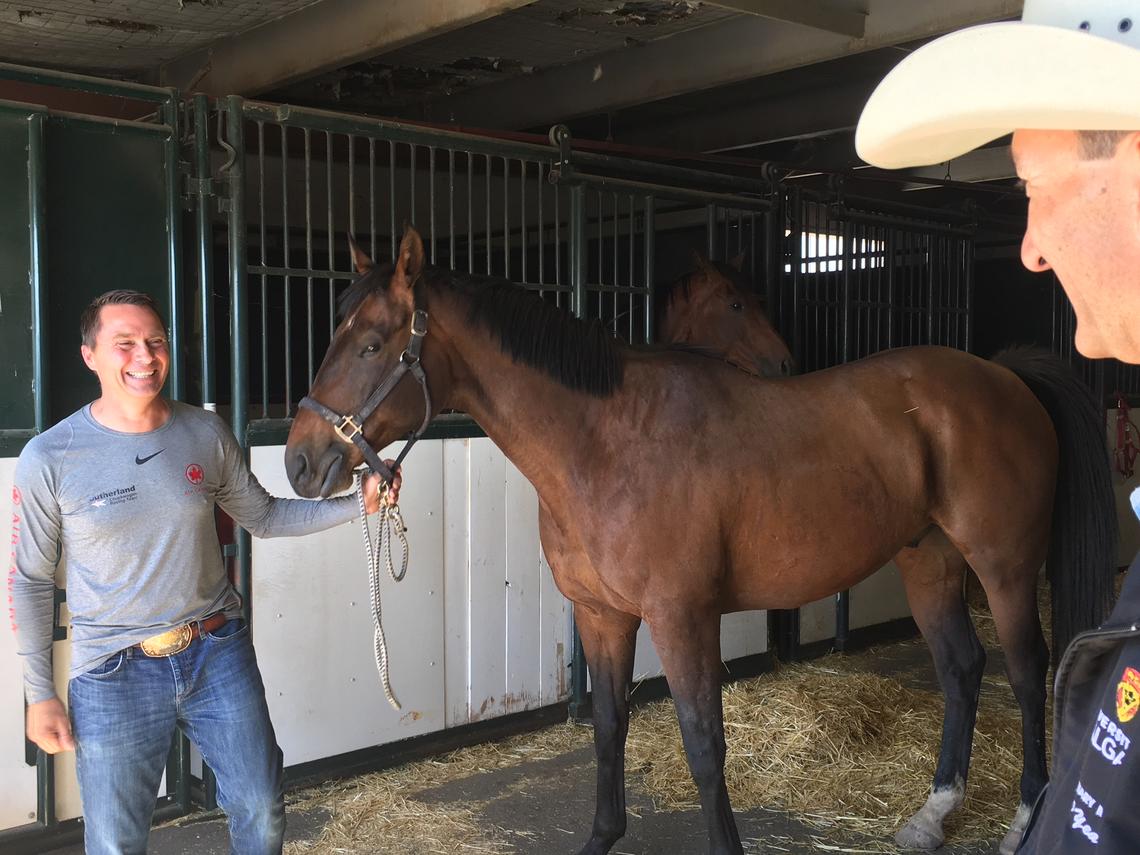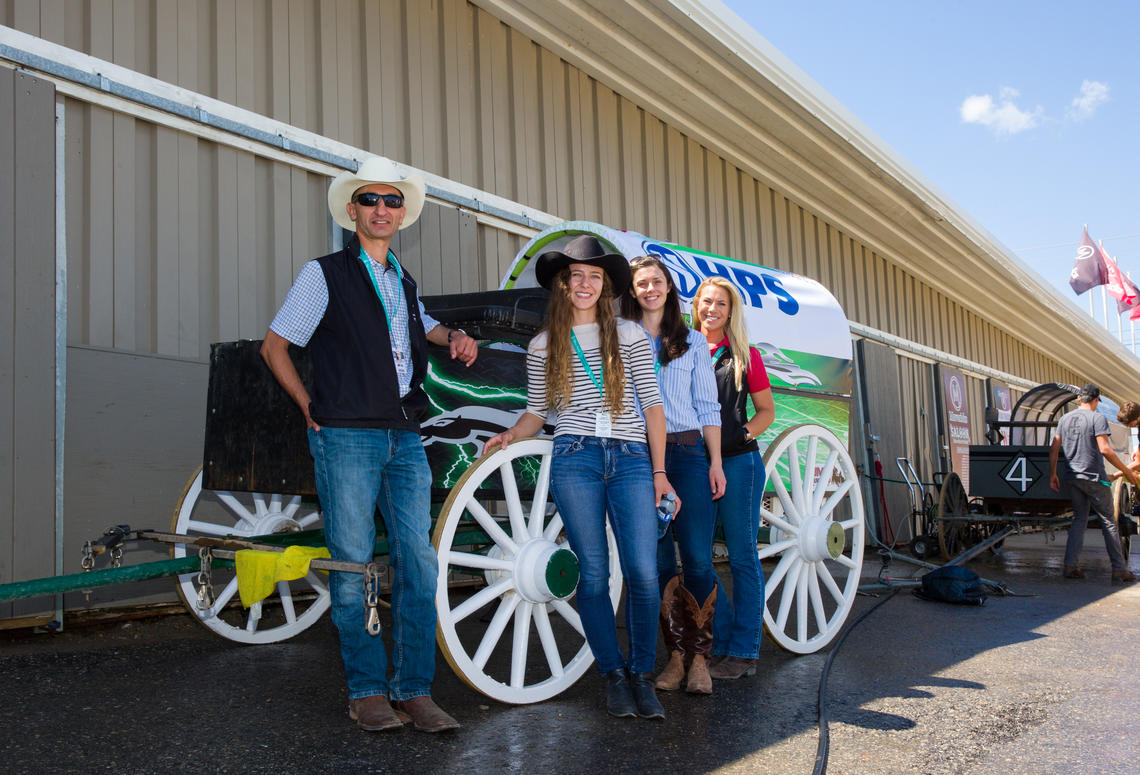July 13, 2018
Vet Med's Renaud Léguillette checks out new way to test chuckwagon horse fitness

A device for testing blood in sick people might prove a good tool to use "track-side" to test a horse’s fitness performance and athletic capacity.
“We have a hand-held analyzer that has not been validated for veterinary use and we need to prove its accuracy in measuring blood ammonia in horses,” says Dr. Renaud Léguillette, DMV, PhD, equine internal medicine professor and Calgary Chair in Equine Sports Medicine at the University of Calgary Faculty of Veterinary Medicine. “Ammonia is tied to anaerobic metabolism — how much power is delivered to the muscles without using oxygen. It’s a little like blood lactate but it’s more specific for assessing athletic performance.” Higher ammonia levels mean a horse is using more anaerobic power.
“We think that in horses it could have a benefit for assessing fitness performance and maybe even as a performance indicator eventually in the future,” Léguillette says.
Leguillette and his research team are testing a number of chuckwagon horses competing in this year’s Rangeland Derby races at the Calgary Stampede. Blood is taken from horses at rest before the chuckwagon races for a baseline and again immediately after the races. He’s working with a leading biochemist at Calgary Laboratory Services to perform rigorous testing of the hand-held tool, comparing its results against the "gold standard" laboratory equipment.

"It’s a great resource for me and I’m happy to participate," says Mark Sutherland, chuckwagon driver
Collene Ferguson, Faculty of Veterinary Medicine
Chuckwagon drivers interested in the latest technology
Léguillette is grateful to the chuckwagon racing community, including drivers like Mark Sutherland, for allowing their horses to be involved in validating the new testing method. “The drivers are very welcoming about the research and sampling of their horses,” says Léguillette. “Chuckwagon guys are incredible for that. We have a great cross relationship, they never blink an eye when I ask to try something with their horses. They’re interested in the latest technology and want to know the results.”
“It’s a little bit humbling," says Mark Sutherland, a veteran professional chuckwagon driver. "I’ve been around horses my whole life and I find out how much I didn’t know when I work with the University of Calgary. It’s a great resource for me and I’m happy to participate. This is all about horse health and I think sometimes it’s a competitive advantage for me because I know things that other people don’t.”

Renaud Léguillette and his research team, Delaney Schofer, Dr. Stephanie Bond, Persephone Greco-Otto
Riley Brandt, University of Calgary
Stampede rodeo as research grounds
For Léguillette and other UCVM researchers, having the Calgary Stampede as their research grounds is an unparalleled opportunity for a veterinary faculty. And the Stampede finds the relationship equally valuable.
“It’s wonderful to have the partnership we have with the University of Calgary,” says Kristina Barnes, communications manager with the Calgary Stampede. “It’s a great benefit having the researchers here to help us make science-based decisions. And to help our competitors and chuckwagon drivers make the best decisions they can for the health and safety of their animals.”

Renaud Léguillette and his team prepare a blood sample at the Calgary Stampede.
Collene Ferguson, Faculty of Veterinary Medicine
